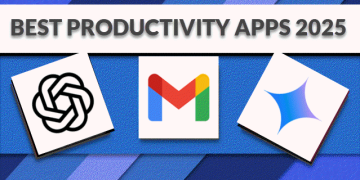Nisha Talagala, Contributor
2025-06-30 10:40:00
www.forbes.com
16 May 2025, China, Peking: A man touches the fingers on the hand of a humanoid robot. China wants … More
Over the last few months, many have noticed a shift in the personalities of commonly used Generative AIs, particularly ChatGPT. These AIs have become sycophantic, cheerleading, and reinforcing any ideas put forth by the user, without critical feedback or reflection. A recent ChatGPT update that turned sycophantic generated so much notice that OpenAI addressed the issue explicitly in their blog. Why do such issues happen in AIs like ChatGPT, and why does it impact you?
What Does Sycophantic Look Like?
Here is a quick example. I upload a PDF of a report to an AI and ask for its opinion. Here are two possible responses:
- The AI can claim that the report is fantastic, and possibly one of the best it has ever read. It may suggest small edits.
- Alternatively, the AI can respond that the report is solid and list strengths and weaknesses.
In either case, the factual elements may be the same. It is also possible that the second response has more suggestions for improvement than the first. Note that both are entirely subjective. There is no single factually correct answer to this query. The AI is being asked for its opinion, and it is free to respond in any way it wishes.
Why AIs Can Become Sycophantic
The first thing to note is that these AIs exist to serve a purpose for their creators. Given that each costs millions of dollars to train, one should expect that they are carefully tuned to ensure that each new generation meets its purpose better than the previous variant. What is the purpose? That depends on the AI. In some cases, particularly when the AI is free to you, the purpose will be to sell you something. If you have already paid for the service, the purpose is likely to keep you sufficiently satisfied to come back for more. It is also important to note that these AIs thrive on data, so the longer you use them, the more data they have. This is another motivation to keep users engaged for longer.
Given these purposes, how does an AI accomplish this? While modern AIs are extremely complex, one process used in their tuning is called Reinforcement Learning with Human Feedback. Via RLHF, the AI can be taught which of several response options is more desirable. If the goal is to keep the human user around for longer, one can expect that the AIs will be guided via RLHF to optimize for this goal.
What Does This Mean?
It means that when an AI answers a question, it is also trying to provide you with an answer that will make you happy and keep you using the AI. This does not necessarily mean untruths or factual errors. While an AI can certainly be trained to deliver these, such answers may render the AI less valuable to the user. The tone of the answer and responses to subjective questions (such as the AI’s opinion on something you wrote) are much easier to change to variants that the AI believes will keep you coming back for more. The AI’s goal may be to be helpful, but when does being helpful mean being supportive or constructively critical? As AIs explore this tradeoff, we can expect to see variants of response tone and content for subjective queries.
Practical Implications
Whether this is an issue depends entirely on what you are using the AI for. If your goal is to find supportive feedback, this may not be a problem at all. However, if your goal is to improve some piece of work that you have done, it may be more helpful to have an AI companion that will provide constructive feedback rather than cheerleading. The impact is more serious if you are counting on an AI to mimic other humans, such as in reviewing a presentation before you present it to your team. Having an overly supportive AI can be a disservice. Without critical feedback, you may arrive at your presentation with a sense of confidence not justified by the content.
Where Can This Go?
This is an interesting question. What I am seeing in the responses is not an intentional change of factual information (i.e., lying). It is a selected perspective from the AI, trying to tell people a variant that would make them happy and keep coming back. It is not clear to me that having an AI intentionally provide untruths is in the creator’s interest. After all, if one of these chatbots develops a reputation for intentional deception, it will likely lose users to competitors. That said, the overall trend suggests that the response we get from an AI is a variant carefully selected to serve its interests. Some researchers have proposed AIs that engage in constructive friction, arguing that such AIs can help humans develop better resilience via a more confrontational engagement. Whether consumers will engage with such an AI is unclear.
This is not new for services. For example, Google merges sponsored ads with search content that is ranked for quality, since it is in Google’s interest to keep users happy by providing high-quality search results. What will happen if chatbots start collecting advertising revenue? Will they post ads identified as such, or would they work the advertiser’s product carefully into answers to questions and present it as perspective?
What Can You Do?
There are several simple things that you can do.
- Ask the AI specifically for constructive feedback and an honest review. The term I use is “brutal review”, but you can use whatever language you like. My experience has been that the quality of constructive feedback increases dramatically when you do this, at least in recent AIs.
- When you use the same AI again and again, its memory capacity also ensures that it adapts to your preferences. As such, it may provide brutal reviews even if you do not explicitly ask for them.
- Ask follow-up questions. Ask the AI to justify its opinion with as close to factual evidence and logical reasoning as is possible, given the question.
- Ask multiple AIs. The variation in responses will likely reveal multiple perspectives on your input that can be helpful.
More than anything else, the key is to recognize that these AIs are complex software programs that exist to serve a purpose for the creators who are investing massive resources in their construction. Once you identify the creator’s goals, you are on your way to having a more productive engagement with the AI, where your goals and the AI’s optimization criteria are aligned as best as possible.
Enhance your driving experience with the P12 Pro 4K Mirror Dash Cam Smart Driving Assistant, featuring Front and Rear Cameras, Voice Control, Night Vision, and Parking Monitoring. With a 4.3/5-star rating from 2,070 reviews and over 1,000 units sold in the past month, it’s a top-rated choice for drivers. The dash cam comes with a 32GB Memory Card included, making it ready to use out of the box. Available now for just $119.99, plus a $20 coupon at checkout. Don’t miss out on this smart driving essential from Amazon!
Help Power Techcratic’s Future – Scan To Support
If Techcratic’s content and insights have helped you, consider giving back by supporting the platform with crypto. Every contribution makes a difference, whether it’s for high-quality content, server maintenance, or future updates. Techcratic is constantly evolving, and your support helps drive that progress.
As a solo operator who wears all the hats, creating content, managing the tech, and running the site, your support allows me to stay focused on delivering valuable resources. Your support keeps everything running smoothly and enables me to continue creating the content you love. I’m deeply grateful for your support, it truly means the world to me! Thank you!
BITCOIN
bc1qlszw7elx2qahjwvaryh0tkgg8y68enw30gpvge Scan the QR code with your crypto wallet app |
DOGECOIN
D64GwvvYQxFXYyan3oQCrmWfidf6T3JpBA Scan the QR code with your crypto wallet app |
ETHEREUM
0xe9BC980DF3d985730dA827996B43E4A62CCBAA7a Scan the QR code with your crypto wallet app |
Please read the Privacy and Security Disclaimer on how Techcratic handles your support.
Disclaimer: As an Amazon Associate, Techcratic may earn from qualifying purchases.





































![[Gigastone] Micro SD Card 32GB 5-Pack, Gaming Plus, MicroSDHC Memory Card for…](https://techcratic.com/wp-content/uploads/2025/07/619ev8iBvzL._AC_SL1000_-360x180.jpg)








































